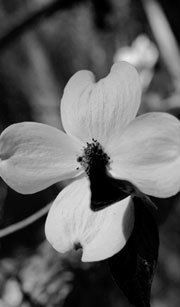 |
||
 |
||

 |
• HOME • GENERAL STORE • NATURAL HERITAGE • HISTORY, CULTURE & CRAFTSMANSHIP |
||||
|
Natural Heritage
• Trees & Shrubs of the Ozarks |
|||||
| Trees & Shrubs Index • Oak • Hickory • Walnut • Catalpa • Loblolly Pine • Red cedar • Elderberry • Sumac • Sassafras • Persimmon • Osage-orange • Mulberry • Witch Hazel • Sarvisberry • Dogwood • Redbud • Crape Myrtle • Mimosa Natural Heritage Index • Fishing • Hunting • Camping • Conservation • Bass Pro Blog • Hills & Hollows • Rivers & Lakes • Springs • Caves • Rocks & Fossils • Trees & Shrubs • Plants & Herbs • Hill Critters • Flyin' Critters • Water Critters • Snakes & Such • Forgotten Critters |
|||


Editor’s note: The small, unassuming sarvisberry tree has a rich history in the Ozark hills, a history which details the important, at-times poetic, relationship between man and nature.
The article below is a reprint, permitted from the College of the Ozarks’ Ralph Foster Museum and for that, I am quite grateful.
It was written by Carson Brewer in his 1998 book, Yarn Spinners. I’m going to see if I can get a copy — and recommend you do the same.
This is good readin’...
“Sarvis” is what the early mountain people called it. It was “Sarvis” because it blooms about the time circuit riding ministers came into the mountains after each hard winter to perform whatever service (or in Old English, “sarvises”) needed to be performed.
There were funerals for those whose hasty burials had been accompanied by scant ceremony. There were wedding sarvises for some who had been waiting all winter to get married.
There is the typical handed-down story of the man, tears streaming down his cheeks as he listens to the funeral preached for his old wife, while his new wife sits beside him.
It may sound funny now. But it wasn’t funny then to the man who had lost his wife and mother of his half-dozen young children. He had to find another mother for them quickly.
Serviceberry, Sarvisverry, Sarvise Tree, Shadbush, Juneberry, Mespilus, Grape Pear, Swamp Subgar Pear, Bloody Choke Cherry... there are a lot of regional variations in the common names for the Amelanchier.
The name amelanchier is said to derive from the honey-tasting berries. These berries are actually quite good in preserves but are rarely used because they are so quickly eaten by birds.
The names containing “shad” apparently refer to the flowers of the plant, which happens when the shad are running.
The wood was prized by the Cree for making arrows.
— “Serviceberry: First Sign of Spring’s Arrival by Carson Brewer, Yarn Spinners, 1998
Article reprinted with grateful permission from the Ralph Foster Museum.
________
Sarvisberry (Amelanchier arborea)
Size: 30 to 40 feet tall; leaves 2 to 5 inches long.
What to look for: leaves elliptical, coarsely toothed, hairy when young; flowers white in drooping clusters (very early spring); fruits berrylike, red to dark purple.
Habitat: hillsides, ravines, edges of streams and moist woods.
— page 313, Wernett, Susan J., et al. North American Wildlife. The Reader's Digest Association, Inc., 1986.
________
Amelanchier arborea photo plates
All photo credits: J. Heston. SOTO © Archive. Plates 1, 3-4, 6-7: Montauk State Park, April 7, 2010. Plate 2: Drury-Mincy Conservation Area, December 15, 2008. Plate 5: Drury-Mincy Conservation Area, April 11, 2009.
A Ralph Foster Article reprint
The staff of College of the Ozarks' Ralph Foster Museum has graciously allowed the reprint of this article from their archive.
Be sure to visit the musuem when you get the chance. The archives are incredibly extensive (they don't call it the Smithsonian of the Ozarks for no reason!).




